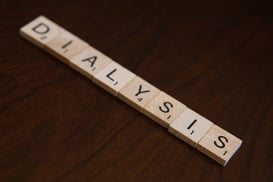 Basically, there are two methods that are commonly used in the preparation of protein samples to make them suitable for long-term storage and compatible with downstream applications - dialysis and gel filtration. So, how do you know which one to use? Here are some things you need to consider if you want to increase your chances of making the right decision.
Basically, there are two methods that are commonly used in the preparation of protein samples to make them suitable for long-term storage and compatible with downstream applications - dialysis and gel filtration. So, how do you know which one to use? Here are some things you need to consider if you want to increase your chances of making the right decision.
Dialysis: Understanding the Basics
Dialysis is a technique that facilitates the separation of macromolecules from small, unwanted compounds in the solution through selective and passive diffusion through a semi-permeable membrane. Sample molecules that are larger than the pores of the membrane are retained on the sample side of the membrane while smaller molecules are diffused freely through the membrane until equilibrium is reached. This action facilitates the reduction in the concentration of small contaminants in the sample until it reaches acceptable or negligible levels.
Gel Filtration 101: Getting Down to the Basics
Gel filtration, on the other hand, uses size exclusion to separate molecules of different dimensions. The range of charged porous particles in the gel filtration media determines the size of molecules that will be separated. Molecules that are smaller than the average or maximum effective pore size (also known as the fractionation range or exclusion limit of the resin) permeate through the pores of the gel filtration media wherein they follow a complex path that slows down their migration through the resin bed.
However, molecules that are larger than the molecular weight cutoff (MWCO) are excluded from the pores and merely flow around the resin beads. Since they take a direct path through the column, the larger molecules are separated from the smaller molecules and are eluted first.
Gel filtration chromatography is commonly used in desalting (the removal of salts from a sample) and buffer exchange (the replacement of one set of buffer salts with another). Desalting is usually accomplished by equilibrating the chromatography column with water. This process is useful in removing salts from protein solutions and/or phenol and other unincorporated nucleotides from nucleic acid preparations during DNA sequencing. It can also be used for separating conjugated proteins from excess reagents.
On the other hand, buffer exchange is performed by equilibrating the column resin with a preferred buffer and is usually done prior to electrophoresis, ion exchange and/or affinity chromatography.
Dialysis vs. Gel Filtration Chromatography: Which One Should You Use?
Comparing the two methods, dialysis usually produce a more concentrated product but it does have its own limitations. Here are some of them:
- The process is quite slow. It may take anywhere from a few hours to several days to facilitate the complete removal of salts and other contaminants from the sample solution. Gel filtration, on the other hand, offers substantial time savings since it can be used to completely remove the contaminants in a matter of minutes. This makes gel filtration ideal for certain experimental situations that require immediate removal of contaminants.
- It requires manual manipulation. Dialysis requires multiple dialysate buffer changes while gel filtration can be fully automated.
- It necessitates the use of large amounts of buffer solution. To achieve the best possible results when performing dialysis, you need to use a buffer solution that is at least 200 times greater than the sample volume. In contrast, a column with a bed volume that is about 4 to 20 times larger than the sample volume is adequate for most gel filtration chromatography procedures. And since the solutes do not interact with the stationary phase, there is also no sample loss.
In addition, gel filtration also offers the following advantages:
- It is compatible with organic solvents that will otherwise dissolve or compromise the integrity of dialysis membranes.
- It allows for the removal of contaminating material in a relatively small volume. This is extremely important when working with toxic or radioactive substances.
Image Source : B. Braun Melsungen AG






